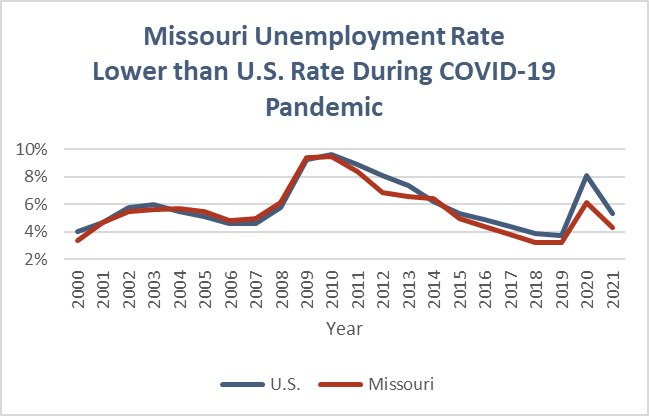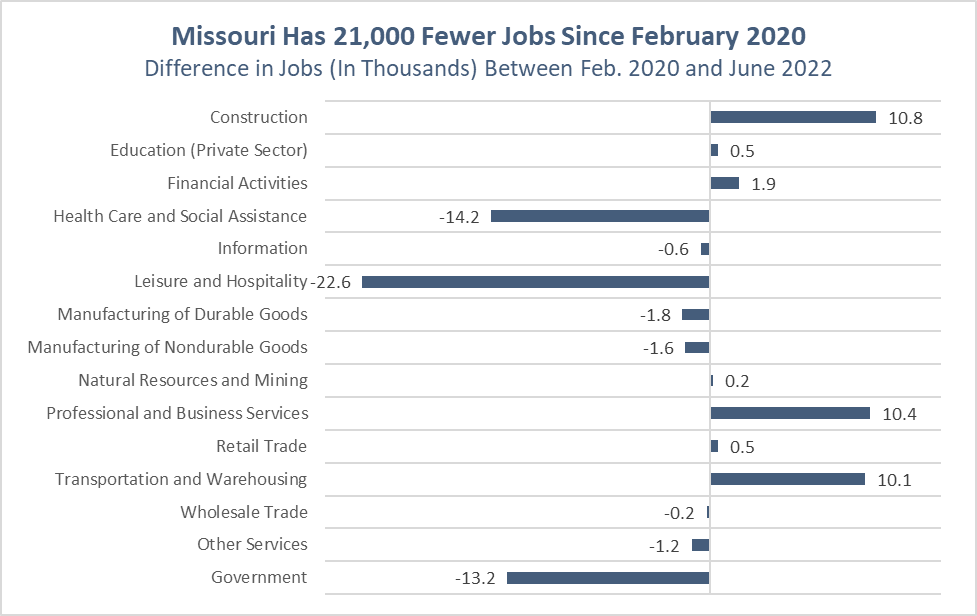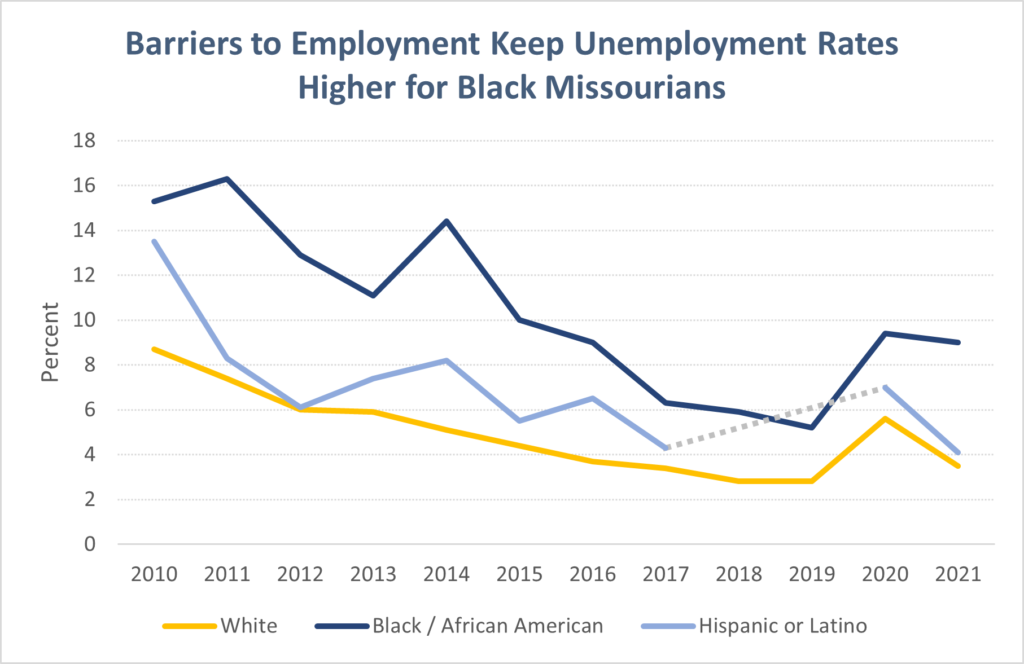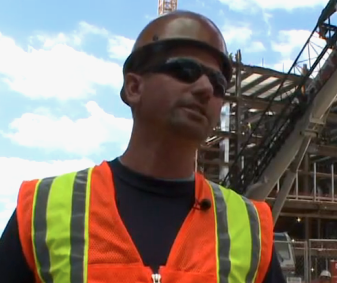Jobs & Unemployment
Before the pandemic, Missouri’s overall unemployment rate was lower than it had been in two decades, and the labor market is now especially tight, with unemployment declining to 2.4 percent in September 2022. However, the unemployment rate masks considerable disparities, and not all occupations and industries have recovered equally. Overall, Missouri has 21,000 fewer jobs today than it did prior to the pandemic.
Missouri’s Unemployment Rate
Like the rest of the country, Missouri’s unemployment rate spiked during the COVID-19 pandemic. While the state’s pre-pandemic 2019 annual unemployment rate was 3.2%, at the height of the pandemic in April 2020, 1 in every 9 Missouri workers (or 11.2%) were unemployed.
Following this spike, fewer Missourians filed for unemployment insurance (UI) benefits in state fiscal year 2021 compared to 2020. As of September 2022, Missouri’s unemployment rate is down to 2.4%.

Unemployment Numbers Do Not Provide Full Picture of Missouri’s Labor Market
However, many workers who are counted as employed are actually underemployed. These individuals are working part-time, but would prefer full-time employment. In addition, the official unemployment rate does not include discouraged job-seekers who would prefer to work but stopped actively seeking employment because they could not find a job, or face some barrier to employment, such as lack of childcare or caring for a sick or older family member. For the quarter ending June 2022, Missouri’s average unemployment rate with underutilized workers is 3.65%—almost 22,000 more workers than are included in the official unemployment rate for the same period.
Moreover, some jobs lost during the pandemic have yet to return. Between February and April 2020, Missouri employers slashed nonfarm payrolls by nearly 360,000 jobs. Of those jobs, 4 of every 10 were in the Leisure and Hospitality industry. As of June 2022, about 21,000 nonfarm jobs have not returned, a majority of which are in Leisure and Hospitality, Health Care and Social Assistance, and Government.

Source: Missouri Economic Research and Information Center (MERIC) in cooperation with U.S. Department of Labor, Bureau of Labor Statistics
While Missouri’s long-term unemployment rate (workers unemployed for 27 weeks or longer) declined slightly from 2019 to 2020 (from 15.7% to 14.5% of total unemployed), the rate more than doubled to 33.2% of all unemployed in 2021. In other words, one of every three unemployed workers in 2021 had been unemployed for 27 weeks or more —the highest rate since 2013.
The Economic Recovery Has Been Uneven
Although the job market has improved since the pandemic started, the economic recovery has been slower for some workers compared to others. In Missouri, Black workers are more than twice as likely to be unemployed compared to White workers, even though they participate in the labor market at nearly the same rate. This two to one Black-white unemployment ratio is consistent with nationwide unemployment data, and it has been documented since the first recorded year of the Bureau of Labor Statistics in 1954. Research finds that occupational segregation and anti-Black discrimination persists in the labor market at nearly all education and skill levels, which may explain some of the disparity.

Source: U.S Bureau of Labor Statistics, Local Area Unemployment Statistics, Expanded State Employment Status Demographic Data.

“Unemployment insurance is a lifeline for workers who hit hard times, whether it’s work drying up in the off-season or a global pandemic. When the weather can affect your weekly or monthly income as it does for our state’s construction workers, unemployment benefits help folks stay afloat and cover groceries and bills.“
Travis Barnes, Ironworkers Local 396
(photo courtesy of the Labor Tribune)
Next: Conclusion
Page 1: Introduction
Page 2: Wages
Page 3: A Spotlight on Care Workers
Page 4: Jobs & Unemployment
Page 5: Conclusion

